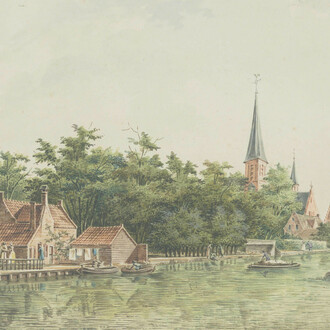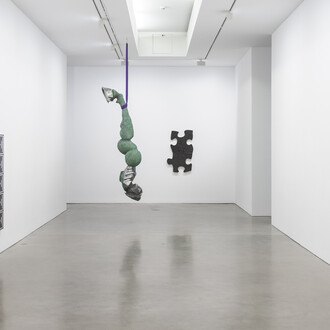For the first time since it was first exhibited 15 years ago, Rémy Zaugg’s comprehensive self-portrait “I, myself.” (2002/03), comprising 18 pale grey text-paintings in different sizes, will be on view again. Swiss artist Rémy Zaugg (1943–2005) is renowned for his works that merge the domains of image and language, engaging the viewer in a complex discussion on perception as well the relevance of modernist abstract painting. Zaugg’s paintings address not only the act of seeing but cognition as a holistic process of the entire perceptual apparatus. Starting with his work “Esquisses perceptives d’un tableau” (1963–68), his annotations to a painting by Cézanne, the artist has systematically developed this relationship between artwork, viewer and context into the central topic of his multidisciplinary oeuvre.
“I, myself.” derives from a meticulous production process. Industrially fabricated, the paintings’ smooth surfaces show no trace of their making, nor those of human touch, and thus emphasise instead the relation of colour and text. Perfect and without history, they are devoid of any associations to painting. The number of words printed onto the aluminium panels in white automotive paint determines the individual size of each painting. The texts are short, fragmentary, partly poetic, but never simple. The white lettering hardly stands out against the light-grey background. Thus overstimulating our senses, the contours start to vibrate so that reading the text irritates one’s eyes. In addition, the minimally different grey hues of the various paintings complicate the act of seeing. Full of contradictions and paradoxes these paintings force us into a state of radical awareness of our own perceptual process and its limitations.
Cézanne is also a reference point for “I, myself.” Zaugg draws on the long history of the self-portrait from Dürer to Lassnig, where the self-portrait became a tool for self-examination and self-confession, making apparent the artist’s grappling both with the self and the work. At the same time, these works transcend the personal and disclose the artist’s relationship to the world. Unlike Cézanne, who set up a mirror to confront his own self, Zaugg turns his paintings into mirrors and entrusts the viewer with the existential question “Who am I?”
The themes of self-reflection and the related question of the basic principles determining our gaze appear today to be more relevant than ever. “I, myself.” offers neither certainties nor easy visual pleasure. “The artist makes an effort to wipe the smile off the faces of those who are knowledgeable, are in the know, and who know what they know,” Zaugg wrote in 1986 on the responsibility of the artist. The world is different to each of us, he insists, and our perception is unique.
Driven by an uncompromising rigour over a period of four decades, Rémy Zaugg worked in a wide range of disciplines. He is mainly known for his exploration of painting, which he conceived of as basic research for his projects in curating, architecture, design and urbanism. Zaugg’s essay “The Art Museum of My Dreams. Or a Place for the Work and the Human Being” (1987) is considered essential in museum studies as well as for museum architecture.
Rémy Zaugg was born in 1943 in Courgenay, Switzerland, and died in 2005. He participated in Skulptur Projekte Münster (1987), the Carnegie International, Pittsburgh (1995) and documenta 7, Kassel (1982). His work has been shown internationally in numerous group exhibitions. Among others, he had solo exhibitions at Reina Sofía, Madrid (2016), Museum für Gegenwartskunst, Siegen (2015), Schaulager Basel (2004), Museum für Moderne Kunst Frankfurt am Main (2002), Kunsthalle Bern (2000), Kunsthalle Basel (1999, 1989, 1980), Kröller-Möller Museum, Otterlo (1996), Museum Folkwang, Essen (1989), Musée d’art Moderne de la Ville de Paris (1991, 1988), Stedelijk Van Abbemuseum, Amsterdam (1984), and Kunstmuseum Basel (1972). In addition to his artistic practice Zaugg was a prolific writer, publishing many theoretical texts. Zaugg’s collaboration with architects Herzog & de Meuron has resulted in several publications and almost 15 architectural works, for instance, the design of Tate Modern London. Galerie Nordenhake presented its first solo exhibition with the artist in 1998, with further solo shows in 2000, 2003 and 2005. This summer, a large number of Zaugg’s works will be on view at Kunstmuseum Basel in an exhibition of the Furer collection (08/17—12/1/2019).
















